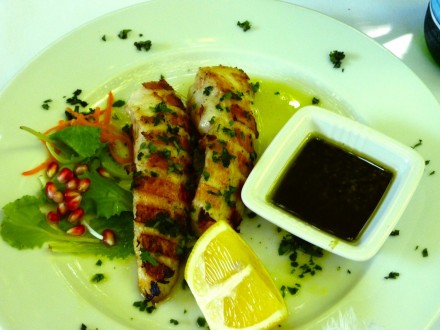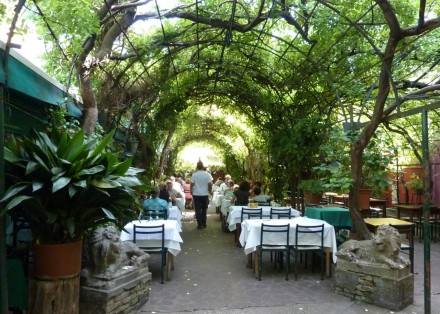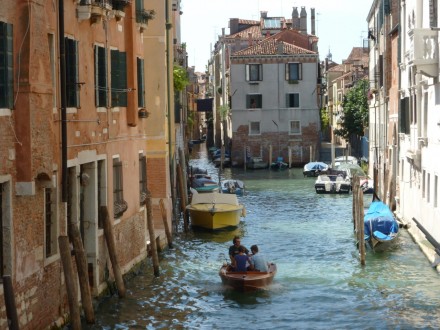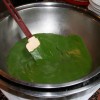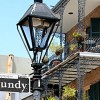VENICE, Italy – It’s an early August afternoon at the restaurant Antica Locanda Montin and owner Luca Carrettin is extremely animated as he talks about monkfish. Even if you don’t speak Italian, some of the words he uses are understandable, like brutta (ugly), which he calls the fish, and fantastico, which he uses to describe the creature’s means of luring its prey with antennae that look like bait.
Carrettin’s parents and aunts and uncles opened the restaurant and 12-room guesthouse in 1950 when he was a boy. Today, he runs the inn with his sister and a cousin. From the looks of old photos scattered among the paintings inside, the rambling building and enormous garden don’t seem to have changed much since the family went into business. And I know that Montin’s monkfish entree hasn’t changed for at least 30 years. My mother flipped over it in 1979 on our first trip to Italy.
Ugly fish, lazy fish, poor man’s lobster. These are the phrases you commonly hear about this mild-tasting, firm, and delicious fish. It’s the grotesque look of monkfish, the meaty texture of its boneless tail, and its lazy way of luring prey into its enormous mouth that spawn such epitaphs. Americans didn’t eat much monkfish until 1980, just after Julia Child introduced a hulking specimen of the fish on one of her TV shows. But it’s been popular in Italy for much longer than that.
Carrettin draws a picture of the fish for me and I recognize it from the raw ones I see displayed on ice in the windows of restaurants here. It has a big, wide head and mouth that comprise half its length and a body and tail that are proportionately puny. Montin’s kitchen removes the backbone, chops the tail in half lengthwise, seasons it with salt, pepper, and olive oil, and grills it. Ironically, the grill marks make it look very much like Atlantic lobster. And although it has earned a reputation in America as poor man’s lobster — because the texture of its meaty boneless tail is closer to lobster than to other fish — it is not as chewy nor does it taste like lobster. It has a more mild, neutral flavor.
All of which makes monkfish very versatile.
Across town in a quiet area of Venice near its north shore, Tony Serantoni, owner of Trattoria Storica, throws open the doors to his restaurant’s dining room to find a quiet place to talk. Serantoni opened this trattoria nearly six years ago, and he is the man behind its good food. I have just eaten his terrific monkfish with polenta. The dish consists of 1-inch chunks of springy monkfish tail in a spicy sauce, served on top of a soupy polenta. It is flavored with lots of fresh herbs, wine, hot peppers, and the backbone of the monkfish — which he says is solid enough to throw in and remove after cooking like one would a ham bone.
Serantoni says that the fish he buys at the central fish market weight a few pounds but that monkfish come in all sizes and that the cheeks of the larger ones are edible but hard to come by and more costly.
When I learn this, I suddenly realize that what I’d eaten at an expensive restaurant in Rome earlier that week must have been monkfish cheeks. At Rome’s Antica Pesa, an order of monkfish amounted to three tiny pieces not much bigger than silver dollars. If they hadn’t been served on individual mounds of tiny lentils, the $35 entrée would have been laughably insufficient for even the lightest eater. Because the texture of the fish was slightly different from the monkfish tail I’ve always had, I was suspicious that I hadn’t been served monkfish at all. Now I’m sure that Antica Pesa was, in fact, plating the more prized fish cheeks.
Fantastico!
Trattoria Storica, Cannaregio, 4858, Ponte dei Gesuiti, 30121 Venezia, www.trattoriastorica.it.
Antica Locanda Montin, Dorsoduro 1147, 30125 Venezia, www.locandamontin.com.
Grilled monkfish
Serves 4
1 1/2 pounds boneless monkfish
Olive oil (for sprinkling)
Salt and pepper, to taste
1 lemon, cut into wedges
1/4 pomegranate, seeds removed
1/2 cup pesto
1. Light a grill or turn on the broiler. Rub the fish with oil, salt, and pepper.
2. Grill or broil the fish close to the heat for 3 minutes on a side or until it is cooked through.
3. Serve with lemon wedges, pomegranate seeds, and pesto. Adapted from Antica Locanda Montin
